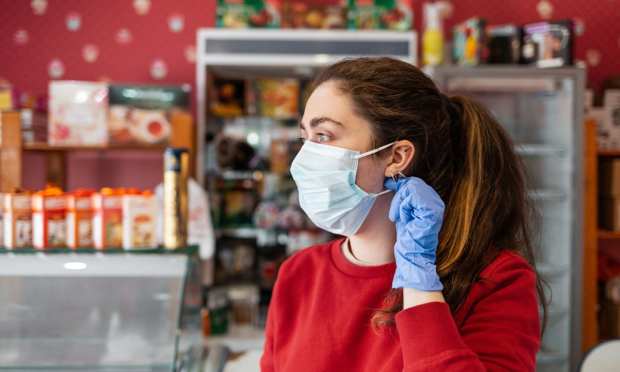Five Fast Facts On The SMB Scene As 2020 Turns Into 2021

The COVID-19 pandemic has been hard on everyone – consumers, businesses, government officials and healthcare workers – but the pain has been far from evenly distributed over the past nine months. Small and medium-sized businesses (SMBs) have unfortunately found themselves at or near the top of COVID-19’s 2020 hit list.
The mom-and-pop shops, independent proprietorships and independently owned restaurants, cafes and coffee shops that line Main Streets all over America have found themselves pushed to the brink – and are nervous about the prospect of their continued survival.
On that front, according to PYMNTS’ latest SMB survey data, small merchants are feeling a little better these days. The proportion who believe that their prospects for survival look strong rose to 54 percent in November, compared to only 48 percent who felt that way in June.
But that increased good feeling is largely reliant on the nation not undergoing yet another round of lockdowns. With the United States deep in the second wave of the pandemic – and more than 2,000 Americans dying from COVID-19 nearly every day – lockdown measures are making a comeback in various U.S. regions.
SMBs are heading into a holiday season that’s very different than usual, but no less busy. It’s unlike any they’ve known before, and many are facing a lot of uncertainty about what happens next – not to mention the divergence of opinion from consumers about when “next” will even begin.
It’s a complicated landscape entering into unprecedented times. But luckily, PYMNTS has five fast facts that will make it that much easier to navigate:
- Consumer Demand Is Increasing, Especially for Multichannel Merchants
The big-picture view shows that demand has been improving for Main Street SMBs, with 46 percent reporting an increase in demand for their products or services.
But zooming in front of that result are some important nuances. Results for businesses in the retail sector were on the whole quite mixed, with 35 percent of retail businesses PYMNTS surveyed reporting an increase in demand. Roughly the same reported stable demand, but 30 percent experienced a decline in sales.
The differentiator separating those seeing a demand pick-up versus a decline is the level of omnichannel services offered, according to PYMNTS data. Multichannel merchants performed better across the board than those relying on a single channel for all sales.
Only 17 percent of omnichannel merchants reported seeing decreased demand, whereas a full third selling only through physical stores saw such a demand fall-off.
- There’s a Big Gap Between When Consumers and SMBs Expect COVID-19 to End
Main Street SMBs across the board are fairly optimistic about the return to normal in the economy – largely premised, it seems, on the recent news of vaccine development. But that optimism is translating into an expectation among SMBs that things will return to normal sooner than most consumers expect.
Firms that PYMNTS surveyed in November expected to be back to normal in about 8-1/2 months (July 2021). But consumers thought the return of normal would be 14 months away (the end of 2021 or early 2022).
That’s a potentially dangerous disconnect, particularly for physical stores that are underestimating how long they have to hang on and could be facing a cash-flow crunch later in 2021.
- SMBs Are Highly Aware of the Vaccine News
When asked about the potential for the COVID-19 vaccine, merchants PYMNTS surveyed are highly aware of that news – and have high expectations for what vaccines could deliver. For example, 86 percent were familiar with the recent announcement of apparent vaccines.
Main Street retailers are optimistic that a vaccine will inoculate their businesses against failure. Some 55 percent felt their businesses were “very” or “extremely” likely to survive for two years once the vaccine became available. And 68 percent felt they were “very” or “extremely” likely to survive the next 18 months once a vaccine shipped.
- Lockdowns Are Anticipated … and Feared
With COVID-19 case counts climbing daily and vaccine distribution in its very earliest stages, the data also demonstrate that SMBs are concerned that the era of shutdowns might be about to make a second appearance in the U.S. economy.
The majority of businesses (74 percent) expect yet another round of lockdowns. And if closures come to pass, they’ll likely have real and dramatic consequences for small businesses nationwide.
Nearly a third of decision-makers for at-risk firms plan to lay off their employees and continue working alone, whereas 43 percent plan to operate their businesses from home. Another quarter plan to borrow more money to keep their businesses afloat in the event of shutdowns.
And a small but still worrisome share (12 percent) expect to permanently cease operations if they have to shutter their doors in compliance with another lockdown.
- SMBs Have Remade Themselves Digitally
The pandemic is going to end someday, but merchants’ newly discovered uses for digital commerce will not. Among those PYMNTS surveyed, 67 percent expect to generate more sales online than they previously did once the pandemic has subsided.
And SMBs plan to rely on digital more. Merchants that already sell mainly online report that they plan to rely on this channel increasingly going forward. That’s to be expected, but perhaps more eye-catching is the fact that more than a third of those that sell mainly in stores will also be relying more on their digital channels.
After all, even though the fear of shopping in stores will pass, consumers’ affection for buying online may never dissipate, and firms having success with online sales are becoming less dependent on foot traffic. Focusing on online sales could serve brick-and-mortar businesses well even in a post-pandemic world, when all the channels are open for business as they once were.
